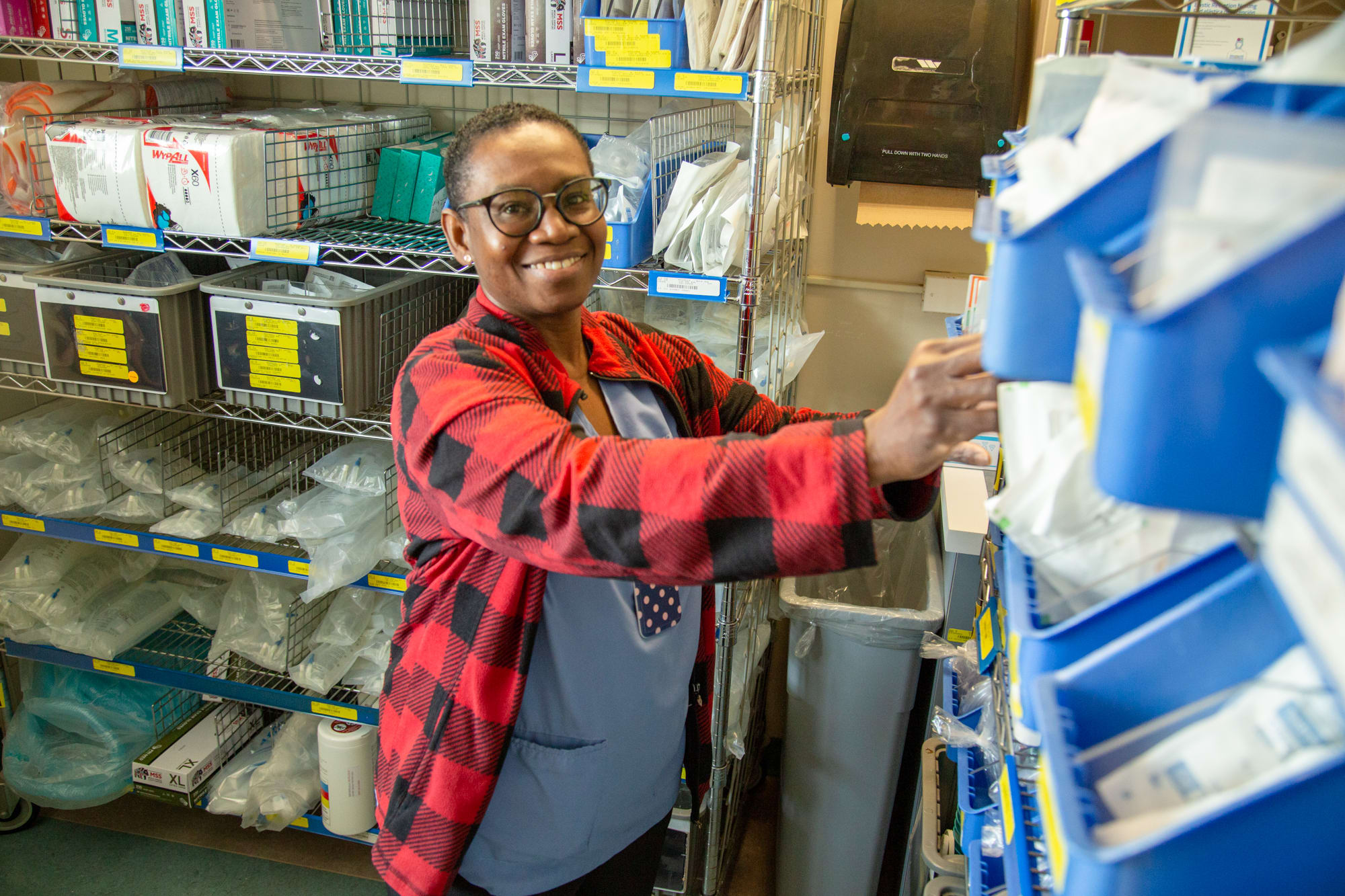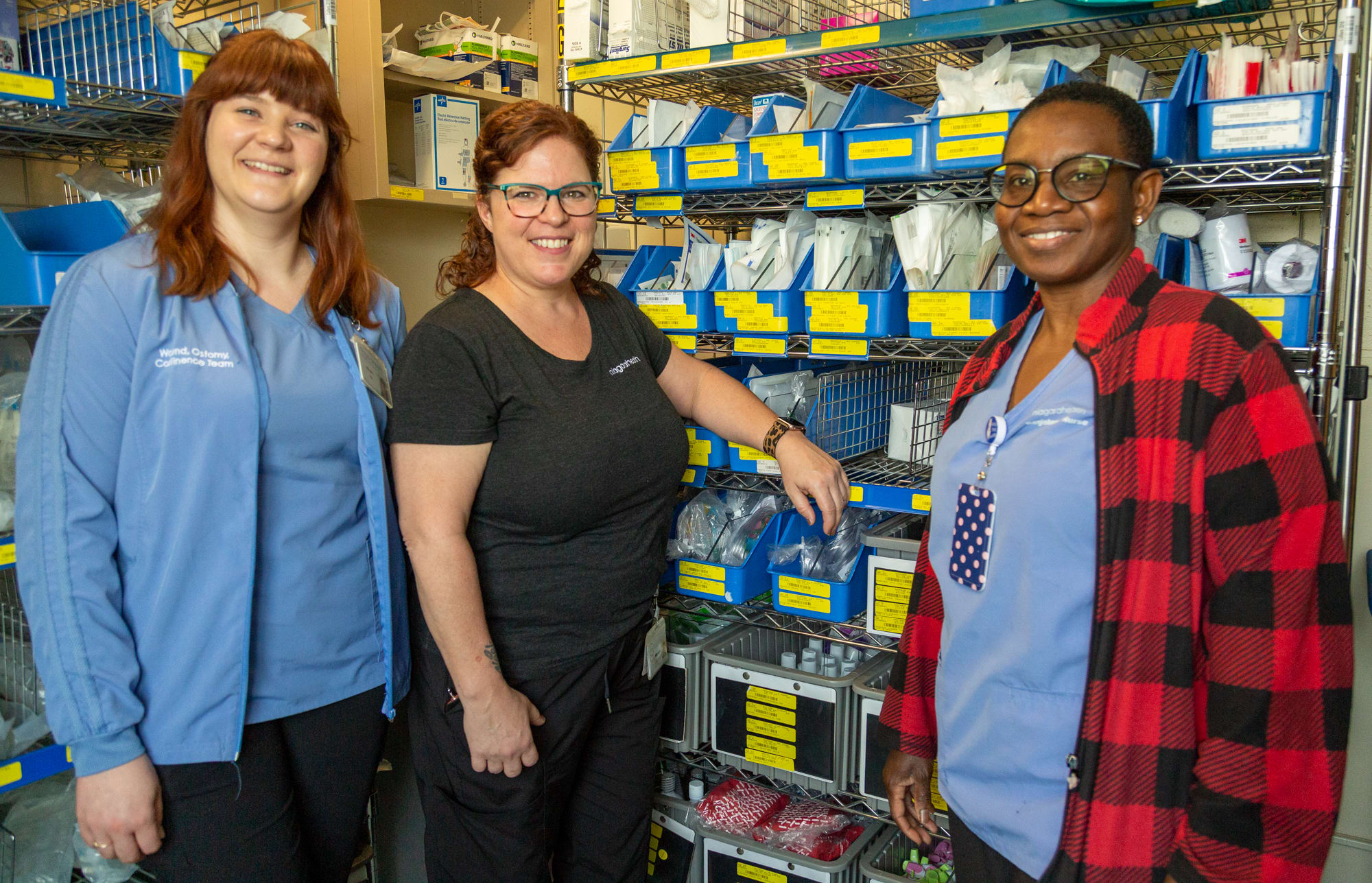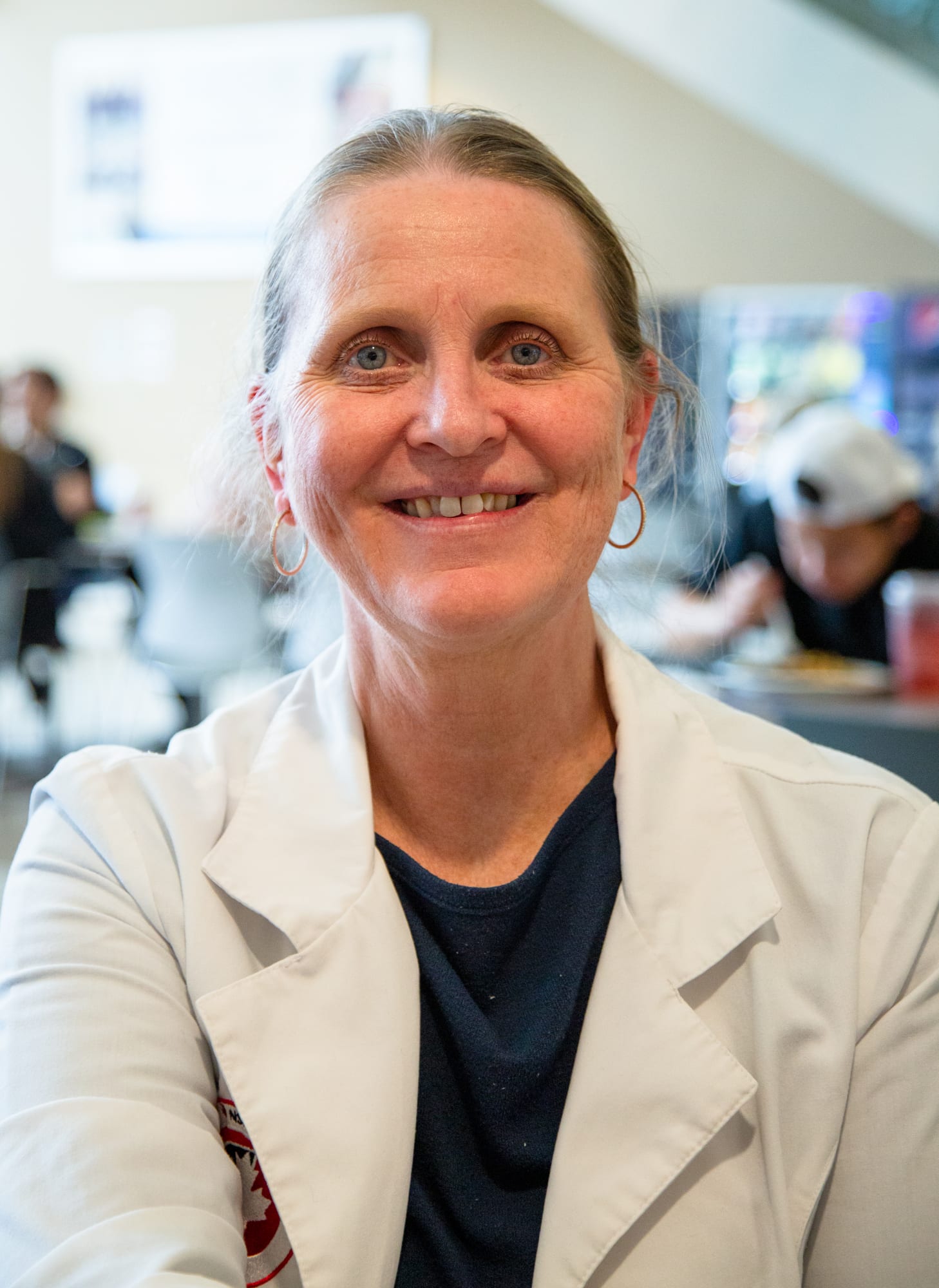This is an opinion column by Niagara Health Communications Specialist Tiffany Mayer, originally published in the St. Catharines Standard, Niagara Falls Review and Welland Tribune.

Wound Care Nurse Abi Osisanwo looks for wound care supplies at the Welland Hospital.
To the untrained eye, the abrasion on Jada Martilla’s groin last winter might have looked like a minor skin irritation.
To the trained eye of Abi Osisanwo, a registered nurse on Niagara Health’s Wound Care team, it looked to be something more serious. Osisanwo’s ability to recognize that is the reason why Martilla is still alive today.
“It’s nothing short of a miracle,” Martilla, of Welland, said.
It was January and Martilla had been admitted to the Welland Hospital intensive care unit with sepsis, a life-threatening, extreme reaction by the body to an infection. A nurse on Martilla’s care team noticed a rash-like irritation on her lower abdomen and reached out to the Wound Care team for help.
Osisanwo responded and cleaned up the area, but as she did, she noticed something far grimmer. She discovered a grey patch of sloughy tissue that gave off the distinct odour of dead tissue near where Martilla’s abdomen meets her left leg.
Osisanwo began methodically removing the tissue, the area giving way to more dead tissue deeper under Martilla’s skin and unsettlingly close to an artery. Osisanwo recommended diagnostic testing and consultation with a plastic surgeon.
Tests confirmed Martilla had necrotizing fasciitis, a bacterial infection, also known as flesh-eating disease, that affects the tissue below the skin that supports muscles and nerves, and holds everything, including fat and blood vessels, in place. Martilla needed antibiotics and surgery to remove all the necrotic tissue, leaving her with a deep and extensive wound that would stretch from her abdomen down her inner thigh and across the back of her leg, leaving exposed connective tissue and muscle in its wake.
She would also require negative pressure or vacuum-assisted wound therapy for three months after surgery.
“The body is amazing. The body heals itself but our role is to help prevent complications, such as infection or inflammation that would delay healing.”

(From left) Michelle Young, a nurse on Niagara Health’s Wound Care team, with Registered Practical Nurse Carolle Vaillancourt and Wound Care Nurse Abi Osisanwo. Osisanwo and Young are two of five nurses making up the wound care team, which also includes Donna Dubiel, Tammy DeMol-O’Sullivan and Advance Practice Nurse Lee Bateman.
The untrained eye seeing the devastating effects of the infection might wonder how the body could ever recover.
“The body is amazing,” Osisanwo said. “The body heals itself but our role is to help prevent complications, such as infection or inflammation that would delay healing.”
Osisanwo is one of five wound care nurses at Niagara Health trained to identify such wounds early and quickly, and initiate proper treatment. But even with treatment, one out of three people with necrotizing fasciitis dies from the disease. It can also result in scarring, loss of limbs, and sepsis, like in Martilla’s case.
Osisanwo has seen plenty of wounds like this one. Given the complexity of this case, Martilla also required treatment at the Niagara Falls and St. Catharines hospitals, meaning nearly everyone on the Niagara Health Wound Care team has had a hand in her ongoing recovery.
In addition, the team, with their extensive knowledge in wound therapy and dressings, works collaboratively with physicians, nurses and others to help patients coming into the hospital with pressure injuries or bed sores. Left untreated, those, too, can be deadly.
They also work together to prevent or ensure early detection pressure injuries, proactively incorporating best practices, including screening, into daily routines, and teaching other nurses and team members these critical skills.
Carolle Vaillancourt, a registered practical nurse and clinical coach at the Welland Hospital, has worked with Osisanwo as she’s cared for Martilla, and is sharing what she’s learned with nurses she mentors to expand wound care knowledge at Niagara Health.

Lee Bateman, Advance Practice Nurse.
The importance of proper wound care can’t be understated. Called the silent crisis, wound care costs Canadians more than $11 billion a year, according to Wounds Canada, a national health charity that advocates for best practices in wound prevention and management.
Closer to home, about 30-50 per cent of all healthcare in Ontario involves managing wounds, yet most complex wounds and amputations are preventable through proper education and healthcare services.
It’s an issue Niagara Health takes seriously, hiring Lee Bateman, an advance practice nurse in wound, ostomy and continence, in 2022 to educate care teams about wound prevention and improve outcomes for patients with acute or chronic wounds.
“Wounds are a huge issue in hospitals,” Bateman said. “Pressure injuries, for example, across interdisciplinary teams, are often overlooked by care teams because they’re misidentified as dermatological conditions or a blister. Meanwhile, that blister is really a Stage 2 pressure or deep tissue pressure injury, which can be catastrophic and result in complex health issues.”
Some of the significant changes Niagara Health has made in wound care since Bateman’s arrival include replacing many hospital bed and stretcher mattresses with gel surfaces that move with patients and prevent pressure injuries. An additional wound, ostomy and continence nurse was also hired.
Together, the team sees six to 15 patients each day across all five sites with some of those, like Martilla, needing hours of care at one time to change dressings and keep wounds on a healing track.
“Our team is hard-working, committed and knowledgeable. They are dedicated to providing the best outcomes possible for every patient,” Bateman said.
Nearly five months after being admitted, Martilla is still recovering in hospital but feeling “1,000 times better,” she said.
Where bacteria had consumed her skin, new tissue has appeared. Conventional antimicrobial dressing and time are what’s needed now to continue healing the wound.
“We’ll follow what the wound tells us to do,” Osisanwo said. “At every stage of healing, everything changes.”
Martilla is counting down the days until she can go home to her cat, Mr. April. She’s also feeling incredibly grateful to Osisanwo and her care team, praising them for making her treatment as comfortable as possible.
“I’m glad I’m here,” Martilla said. “I feel grateful, and it gives me peace of mind someone is here to help.”

